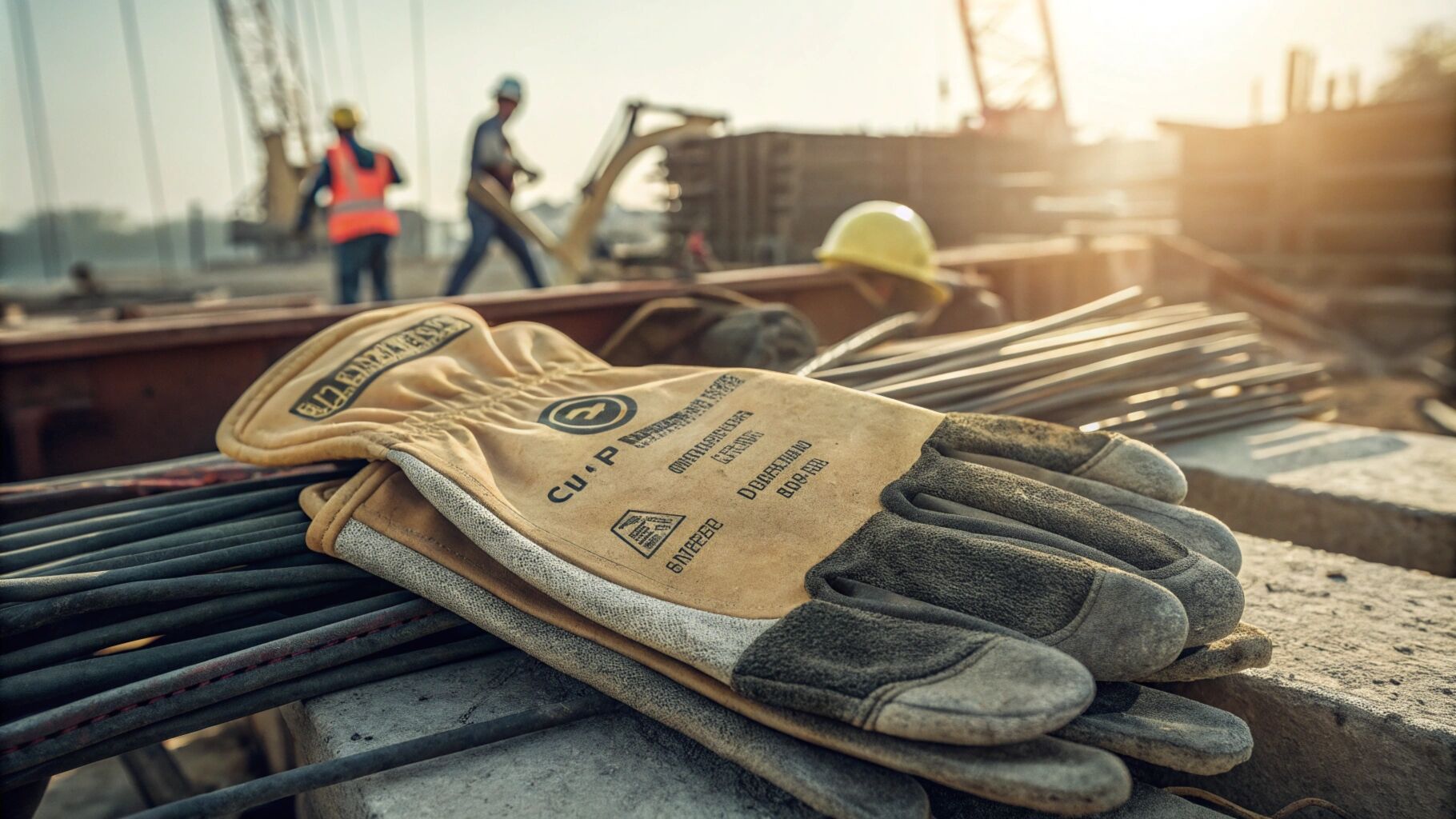
If you work in construction, you know how dangerous the job can be. Without the right safety gear, even a small mistake can lead to injury. Protective gloves are one of the most crucial pieces of safety equipment.
Construction workers should use gloves designed to protect against hazards like cuts, abrasions, impacts, and punctures. These gloves must meet safety standards and suit the specific tasks.
Choosing the right gloves is not just about safety—it’s also about comfort and efficiency. Let’s dive deeper into the recommendations and options to help you make an informed decision.
What gloves does OSHA recommend?
The Occupational Safety and Health Administration (OSHA) provides guidelines on choosing gloves to ensure workplace safety.
OSHA recommends gloves that provide protection against specific hazards like cuts, punctures, and chemical exposure while allowing workers to perform their tasks efficiently OSHA glove recommendations1.
Dive deeper: What does OSHA require in protective gloves?
OSHA emphasizes a hazard-based approach to glove selection. Employers must assess workplace risks, then choose gloves that address these hazards. Here’s a quick overview of what OSHA focuses on:
- Hazard-specific design: Gloves should protect against the specific dangers present in a construction site, such as sharp edges, electrical risks, or chemical spills.
- Proper fit: Gloves must fit well to avoid interfering with a worker’s grip or dexterity.
- Material safety: The materials should resist punctures, cuts, or chemicals, depending on the task.
| Hazard Type | Recommended Gloves |
|---|---|
| Sharp objects | Cut-resistant gloves (e.g., Kevlar, HPPE) |
| Heavy tools | Impact-resistant gloves with reinforced palms |
| Chemical handling | Nitrile or chemical-resistant gloves |
| Electrical work | Insulated rubber gloves |
By following these guidelines, OSHA ensures that construction workers have proper hand protection tailored to their needs.
What are gloves for construction?
Construction gloves are specially designed to provide safety and comfort to workers in hazardous environments.
These gloves protect hands from injuries caused by heavy tools, sharp materials, impacts, and environmental hazards types of construction gloves2.
Dive deeper: Common types of construction gloves
There’s no one-size-fits-all solution in construction. Gloves are tailored to protect against different hazards. Here’s a breakdown:
1. Cut-resistant gloves
- Protect against lacerations from sharp tools or materials like glass or metal.
- Common materials: Kevlar, HPPE (high-performance polyethylene) cut-resistant gloves3.
2. Impact-resistant gloves
- Provide extra padding and protection on knuckles and palms.
- Ideal for heavy-duty work like handling sledgehammers or power tools.
3. Chemical-resistant gloves
- Used when handling substances like adhesives, solvents, or paints.
- Made of nitrile, PVC, or other chemical-resistant materials.
4. Leather gloves
- Durable and heat-resistant, perfect for welding or handling abrasive materials.
| Glove Type | Ideal For |
|---|---|
| Cut-resistant | Cutting, handling sharp objects |
| Impact-resistant | Heavy tools, high-impact tasks |
| Chemical-resistant | Chemicals, solvents, adhesives |
| Leather | Welding, abrasion, and general handling |
Each glove type has its own set of strengths and limitations. The key is choosing the right glove for the job.
Which type of hand gloves are suitable for building operations?
Not all gloves are created equal—some are better suited for building tasks than others.
For building operations, gloves must protect against punctures, abrasions, and impacts while allowing flexibility and grip. Common choices include nitrile, leather, and cut-resistant gloves types of gloves for building operations4.
Dive deeper: Factors to consider when choosing building gloves
1. Hazard protection
Construction often involves sharp tools, heavy materials, and rough surfaces. Gloves must offer adequate protection against these dangers.
2. Dexterity and comfort
Workers need gloves that allow them to perform tasks precisely. Gloves that are too bulky or tight can reduce productivity.
3. Durability
Gloves for construction must be long-lasting to withstand wear and tear from daily use.
What type of gloves are recommended?
Ultimately, the best gloves for construction workers depend on their tasks and hazards.
Gloves made from durable materials like Kevlar, nitrile, or leather are recommended for their protection against common risks in construction ANSI-certified gloves5.
Choosing gloves isn’t just about safety; it’s about improving work efficiency and preventing long-term injuries.
Dive deeper: Balancing protection and productivity
Certified gloves offer reliable performance while ensuring workers stay safe on-site.
Conclusion
Selecting the right gloves for construction is essential for safety and productivity. From cut-resistant Kevlar to durable leather gloves, the choice depends on the task and hazards workers face.
-
Learn more about OSHA's specific guidelines for glove safety. ↩
-
Explore the different types of gloves and their applications in construction settings. ↩
-
Discover why cut-resistant gloves are critical for protecting against sharp tools and materials. ↩
-
Understand which gloves provide the best protection and functionality for building tasks. ↩
-
Find out why safety certifications like ANSI/CE matter when selecting protective gloves. ↩
